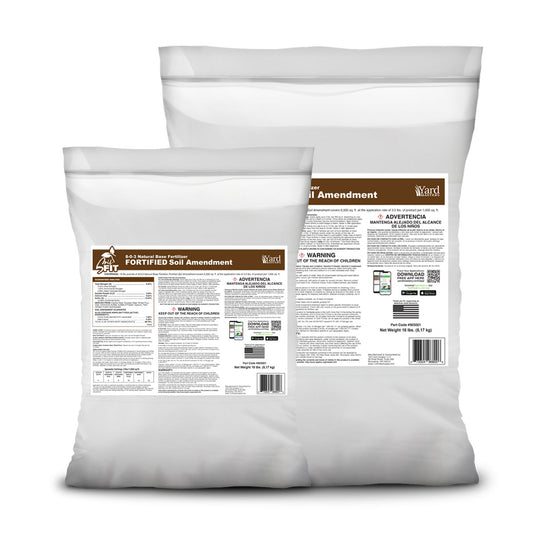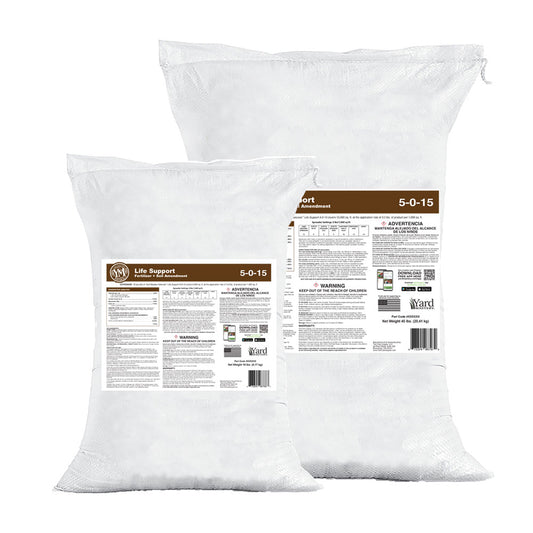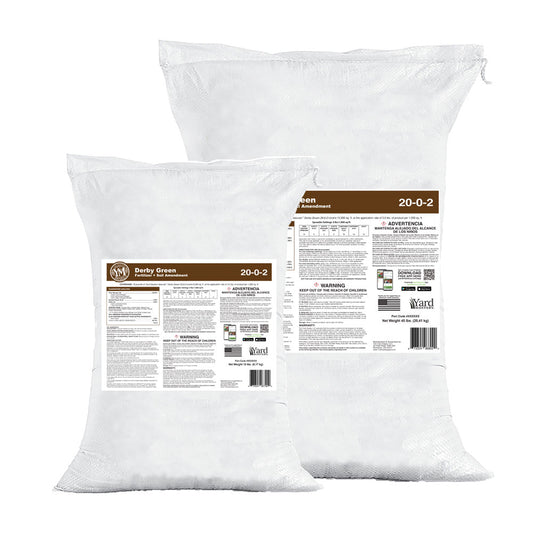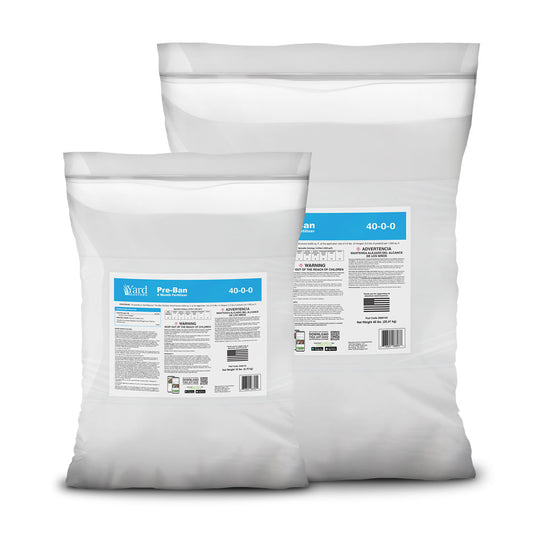The Ultimate Guide to Crabgrass Control
Published on April 29, 2025 by Yard Mastery
Crabgrass is the bane of every homeowner dreaming of a perfect lawn. This invasive weed spreads rapidly, stealing nutrients from your grass and leaving unsightly patches. Fear not—this comprehensive guide equips you with expert strategies to identify, prevent, and eliminate crabgrass, ensuring a lush, healthy lawn.
Introduction: Meet Your Lawn's Nemesis - Crabgrass
Crabgrass (Digitaria spp.) is a notorious summer annual weed that plagues lawns worldwide. Its aggressive growth and adaptability make it a formidable foe. Thriving in hot, dry conditions, crabgrass outcompetes desirable grasses like Kentucky bluegrass and fescue, thanks to its efficient C4 photosynthesis. A single plant can produce up to 150,000 seeds, creating a persistent seed bank in the soil that ensures future invasions.
Conquering crabgrass requires a smart, integrated approach. This guide combines scientific insights with practical steps, embracing a hybrid lawn care philosophy that prioritizes long-term lawn health through cultural practices and organic methods, supplemented by targeted synthetic controls when needed.

Step 1: Know Your Enemy - Identifying Crabgrass
Accurate identification is crucial for effective crabgrass control. Misidentifying it can lead to wasted efforts. Crabgrass has distinct features that set it apart from desirable turfgrasses and other weeds.
Key Visual Cues
- Color: Light, yellowish-green or lime-green, contrasting with the darker green of cool-season grasses. Mature plants may develop reddish-purple hues.
- Growth Habit: Low, spreading, forming dense clumps or star-shaped mats. Stems radiate outward, rooting at nodes.
- Leaf Blades: Wide, flat, and coarse, typically 1/4 to 1/2 inch wide and up to 6 inches long.
- Seedheads: Finger-like spikes (3–7) appearing in late summer, producing thousands of seeds.
Smooth vs. Large Crabgrass
The two main types in U.S. lawns are Smooth Crabgrass (Digitaria ischaemum) and Large Crabgrass (Digitaria sanguinalis), also called Hairy Crabgrass:
- Large Crabgrass: Hairy leaf blades and sheaths, grows taller (up to 2–3 feet unmowed).
- Smooth Crabgrass: Mostly hairless, shorter (under 1 foot), often with purple-tinted stems.
Common Look-Alikes
Crabgrass can be confused with other weeds:
- Quackgrass: Perennial with deep rhizomes and clasping auricles.
- Bermudagrass: Perennial with stolons and rhizomes, finer leaves.
- Goosegrass: Whitish, flattened stems and tough taproot.
- Dallisgrass: Perennial with separated seedhead branches.

Step 2: Understand Its Lifecycle - Timing is Everything
Crabgrass follows a predictable annual cycle, driven by soil temperature and day length:
- Germination (Spring): Seeds germinate when soil temperatures reach 53–55°F for 3–5 days, typically March–May.
- Vegetative Growth (Summer): Plants spread, forming dense mats and competing with turf.
- Reproduction (Late Summer): Seedheads form, producing up to 150,000 seeds per plant.
- Death (Fall): Plants die with the first frost, leaving seeds dormant in the soil.
Timing control measures, especially pre-emergent herbicides, to this cycle is critical. Germination peaks at soil temperatures of 60–70°F, and seeds can remain viable for years, necessitating consistent management.
Step 3: Why Crabgrass Chose Your Lawn
Crabgrass exploits lawn weaknesses, thriving in conditions where desirable grasses struggle:
- Thin Turf & Bare Spots: Open areas allow sunlight to reach seeds, promoting germination.
- Compacted Soil: Common in high-traffic areas, hindering turf growth.
- Hot, Dry Conditions: Crabgrass’s C4 photosynthesis gives it an edge in summer heat.
- Sunny Areas: Thrives in full sun, especially near driveways or sidewalks.
Common lawn care mistakes can also invite crabgrass:
- Mowing Too Short: Reduces turf density, allowing sunlight to reach soil.
- Shallow Watering: Encourages shallow-rooted weeds like crabgrass.
- Improper Fertilization: Summer nitrogen applications feed crabgrass, not dormant cool-season grasses.
- Poor Seeding Timing: Spring seeding coincides with peak crabgrass germination.
Step 4: Fight Back with Cultural Controls
A dense, healthy lawn is your best defense against crabgrass. These cultural practices create an environment where turf thrives and weeds struggle:
Mow High, Mow Often
Maintain a mowing height of 3–3.5 inches for cool-season grasses. Taller grass shades the soil, discouraging crabgrass germination, and promotes deeper roots. Follow the one-third rule: never remove more than one-third of the grass blade at once.
Water Deeply, Not Daily
Apply 1–1.5 inches of water weekly in 1–2 sessions, allowing soil to dry between waterings. Deep watering encourages robust turf roots while discouraging shallow-rooted crabgrass.
Fertilize Smartly
Fertilize in spring and fall with 2–4 pounds of nitrogen per 1,000 square feet annually, guided by soil tests. Avoid summer nitrogen applications, which benefit crabgrass.
Build Healthy Soil
Test soil to correct pH and nutrient deficiencies. Core aeration in fall relieves compaction, improving water and nutrient uptake.
Overseed to Thicken Turf
Overseed in late summer or early fall to fill thin areas. Choose turfgrass varieties suited to your climate and site conditions.
Hand-Pulling
For small patches, hand-pull young crabgrass when soil is moist, removing the entire root. Dispose of plants to prevent seed spread.
Step 5: Pre-Emergent Herbicides - Your Preventative Strike
Pre-emergent herbicides form a soil barrier to stop crabgrass seeds from sprouting. Timing is critical—apply before germination begins.
Timing the Application
Apply when soil temperatures at a 1–2 inch depth reach 53–55°F for 3–5 days, typically March–April. Use these indicators:
- Soil Thermometer: Most accurate method.
- Forsythia Bloom: Apply during full bloom or as petals fade.
- Growing Degree Days (GDD): Use online GDD trackers for precise timing.
Top Pre-Emergent Herbicides
| Active Ingredient | Examples | Key Features | Safe for Spring Seeding? |
|---|---|---|---|
| Prodiamine | Barricade, Sta-Green | Long-lasting (season-long), apply early. Risk to fine fescue if over-applied. | No |
| Dithiopyr | Dimension, Preen | 3–4 months control, early post-emergent activity on small crabgrass. | No |
| Pendimethalin | Scotts Halts, Pendulum | 3–5 months control, may need second application. | No |
| Mesotrione | Tenacity | 4 weeks control, safe for seeding some cool-season grasses. | Yes (check label) |
| Siduron | Tupersan | Short residual, designed for seeding cool-season grasses. | Yes |
Application Tips
- Water in with 0.5 inches of irrigation within 24–72 hours.
- Ensure uniform coverage with a calibrated spreader or sprayer.
- Consider split applications for short-residual products.
- Read the label for turf compatibility and seeding restrictions.
Step 6: Post-Emergent Herbicides - Cleaning Up Escapees
Post-emergent herbicides target crabgrass after it emerges. They’re most effective on young plants (1–5 leaf stage).
Top Post-Emergent Herbicides
| Active Ingredient | Examples | Effective Stage | Turf Safety Notes |
|---|---|---|---|
| Quinclorac | Drive XLR8, Ortho Weed B Gon | Seedling to mature, less effective at 2–3 tillers. Safe for most cool-season turf. | Caution on fine fescue. |
| Fenoxaprop-p-ethyl | Acclaim Extra | Up to 3–4 tillers. Risk to Kentucky bluegrass in heat. | Avoid tank-mixing with 2,4-D. |
| Mesotrione | Tenacity | Up to 3 tillers, causes whitening. Safe for seeding some grasses. | Requires surfactant. |
| Topramezone | Pylex | Younger stages, excellent for goosegrass. Causes whitening. | Requires surfactant. |
Application Tips
- Use surfactants as recommended to improve absorption.
- Avoid spraying above 85–90°F to prevent turf injury.
- Don’t mow 2–3 days before or after application.
- Spot-treat small patches to minimize herbicide use.
Step 7: Exploring Organic Options
For eco-friendly control, consider these natural methods:
- Corn Gluten Meal (CGM): A natural pre-emergent applied at 20 pounds per 1,000 square feet in spring. Its effectiveness is debated, but it acts as a slow-release nitrogen fertilizer, promoting turf density.
- Horticultural Vinegar: Spot-treat young crabgrass with 20% acetic acid solutions.
- Boiling Water: Effective for crabgrass in non-lawn areas like driveways.
- Organic Mulch: Apply 2–3 inches in garden beds to block sunlight.
CGM’s high nitrogen content may conflict with local fertilizer laws, and its herbicidal effect is inconsistent. Combine with cultural practices for best results.
Step 8: Your Personalized Crabgrass Battle Plan
Effective crabgrass control requires a consistent, integrated approach:
- Year-Round Cultural Practices: Mow high, water deeply, fertilize smartly, and overseed to maintain a dense lawn.
- Pre-Emergent Timing: Apply herbicides in early spring before germination.
- Monitor and Act: Hand-pull or spot-treat breakthrough crabgrass early.
- Adapt: Focus on problem areas, use soil tests, and consider lawn renovation for severe infestations.
Consistency over multiple seasons depletes the seed bank, reducing crabgrass pressure over time.
Frequently Asked Questions
Can I get rid of crabgrass permanently?
Permanent eradication is challenging due to crabgrass’s prolific seed production and long-lasting seed bank. A single plant can produce up to 150,000 seeds, viable for years. Effective long-term control involves consistent cultural practices (mowing high, proper watering) and timely pre-emergent herbicides to prevent germination.
When is the best time to apply crabgrass preventer?
Apply pre-emergent herbicides in early spring when soil temperatures reach 53–55°F for 3–5 days. Use a soil thermometer, check GDD trackers, or observe Forsythia blooms as indicators. Timing varies by region—consult local extension services.
Can I seed my lawn in spring with a crabgrass preventer?
Yes, but use Siduron (Tupersan) or Mesotrione (Tenacity), which allow cool-season grass seeding. Most pre-emergents prevent grass seed germination, requiring a 2–4 month wait. Fall seeding is preferred to avoid conflicts.
How late can I spray crabgrass in summer?
Post-emergent herbicides work best on young crabgrass (1–5 leaf stage). After mid-July, mature plants are harder to control and may set seed. Focus on cultural practices and plan for next spring’s pre-emergent.
What’s the best crabgrass killer safe for my lawn?
For prevention, use Prodiamine, Dithiopyr, or Pendimethalin on established lawns, or Siduron/Mesotrione for seeding. For existing crabgrass, Quinclorac, Fenoxaprop, Mesotrione, or Topramezone are effective. Always check the label for turf safety.
Shop Crabgrass Control Products
Ready to tackle crabgrass? Explore our curated selection of pre-emergent and post-emergent herbicides, organic options, and lawn care tools to achieve a weed-free lawn.
- Pre-Emergent Herbicides – Stop crabgrass before it starts.
- Post-Emergent Herbicides – Eliminate existing crabgrass.
- Organic Weed Control – Eco-friendly solutions like corn gluten meal.
- Lawn Fertilizers – Strengthen your turf to outcompete weeds.








